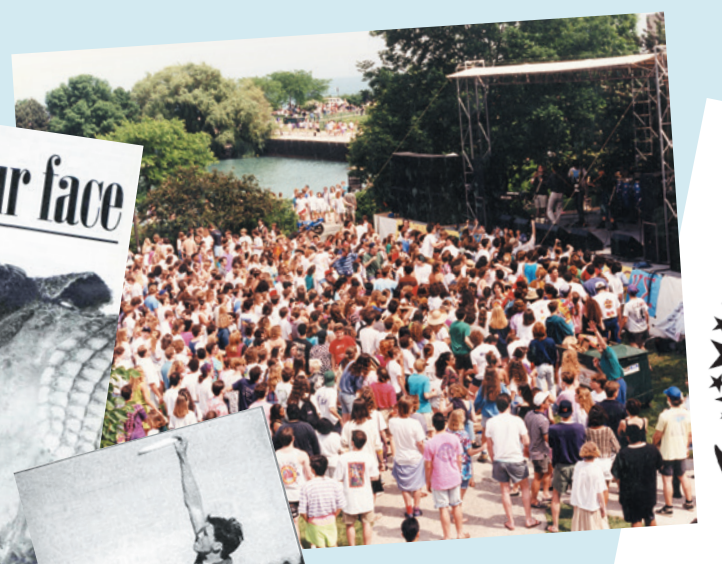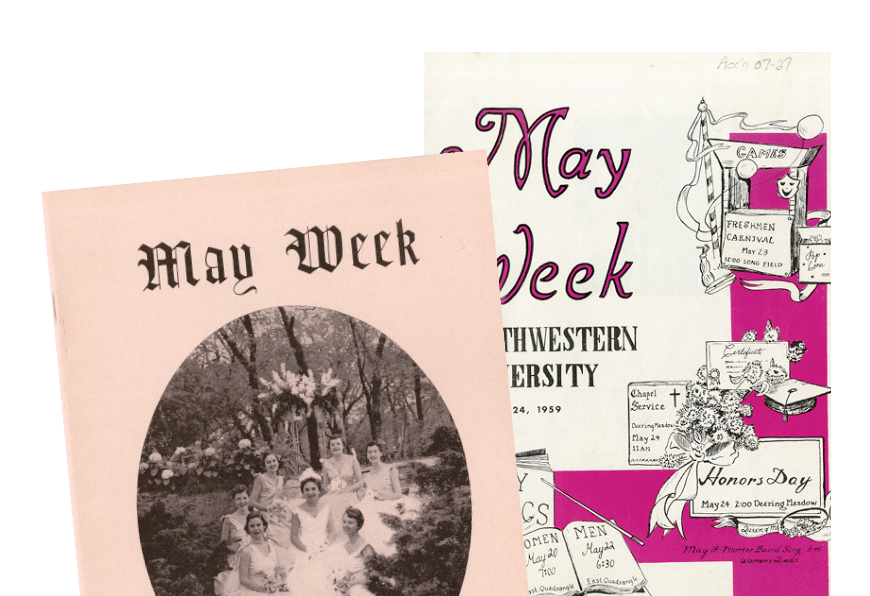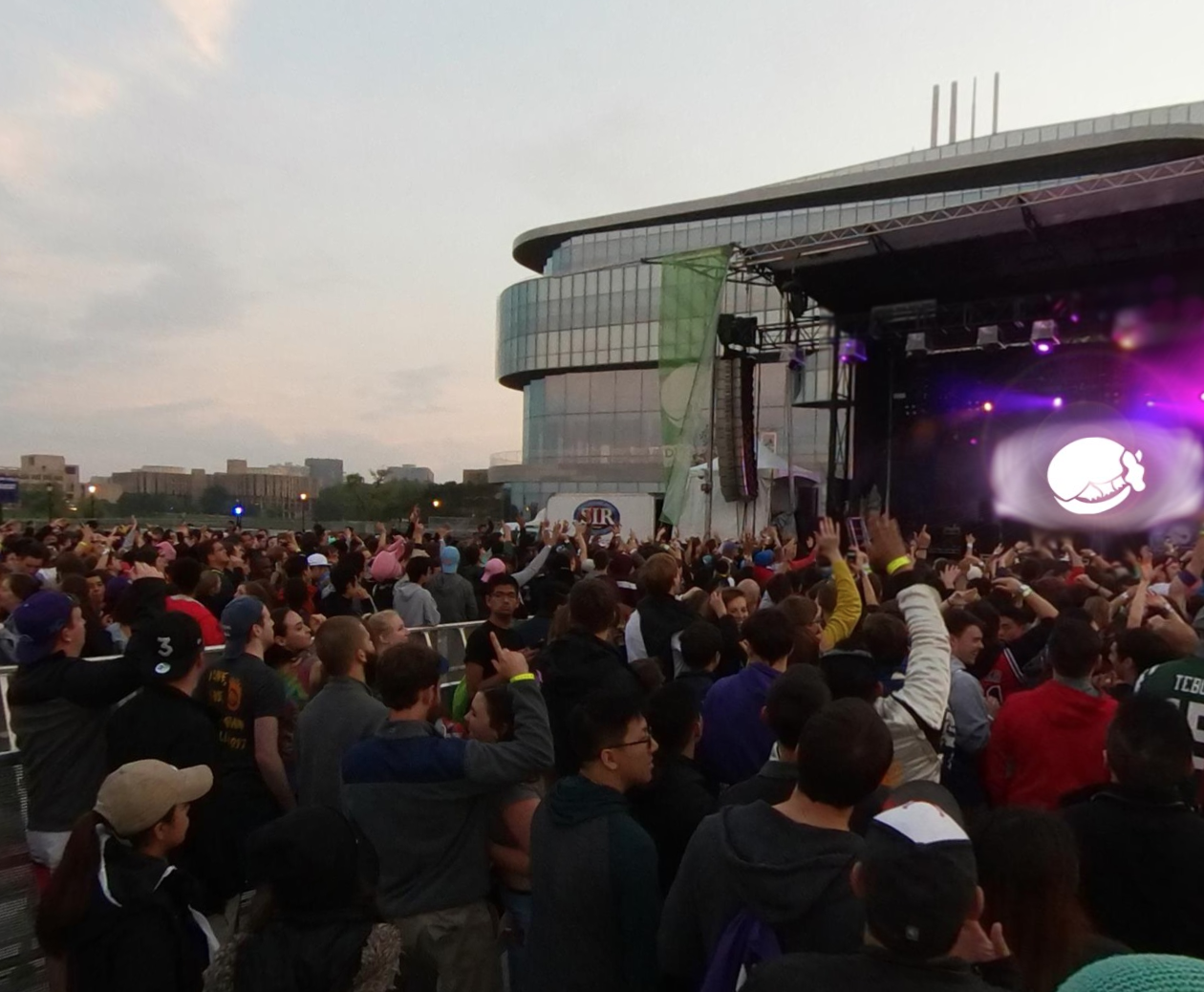The (contested) history of how Dillo Day came to be.

It’s nearly impossible to trace the exact origins of Dillo Day. This Northwestern tradition has taken many forms, from a pageant on Deering Meadow in the 1870s to A$AP Ferg on the Lakefill in 2019. Library archivists, and even the co-founders themselves, still debate its beginnings. But everyone agrees that, for over a century, students have been trying to find ways to celebrate surviving another year at Northwestern.
1875: May Queen
The election of a May Queen was a hallmark of Northwestern’s early festivals, or “May fetes,” that predate Dillo Day. An article from The Tripod, a student newspaper published throughout the 1870s, shows the May Queen tradition dates back to at least 1875. Participants paid 10 cents to vote for the May Queen, a showdown less exciting than today’s Battle of the Bands. The tradition continued throughout the 20th century, ending in the 1970s.
1928: May Week
The festivities expanded to become May Week as early as 1928. The week-long celebration included events like a “Howdy Day” party, a dance on the Tech terrace, a Street Dance in the Patten parking lot, a freshman carnival, and parades honoring outstanding junior men and women. In 1950, a steering committee formed and May Week became an official staple of Northwestern.

1970s: Dillo Origins Controversy
With conflicting origin stories, two alumni each claim to have founded Dillo Day.
Richard Gochnauer (‘72) was the president of the Interfraternity Council. According to him, they used money left over in their budget to fund a campus-wide party, complete with kegs, bands and more kegs — despite Evanston being a dry town. Legend has it, the Dean of Men (yup, that existed) almost busted the party, but after seeing how much fun everyone was having, approached Gochnauer and said, “Give me a beer.”
Donald Stout (‘73) says he and other self-described hippies founded Dillo Day in May 1973 as a festival that included local bands, face-painting and costumes. The festival was originally called “I Don’t Think We’re in Kansas Anymore,” but was renamed to “Armadillo Productions” after Stout’s home state Texas’ animal.
1980s: Birth of the Modern Dillo
After the first Dillo Day, the festival continued to grow. After going through a string of different names, including “The Rite of Spring,” “Festival of Life,” “Gentle Thursday,” and “Let’s Call it George,” the festival finally became Armadillo Day in 1977. According to a 1983 article from The Daily Northwestern, early Dillo Days brought some wild times, from students collectively tripping acid to Evanston high school girls pouring beer from the roof of beer trucks.
Dillo Day remained part of May Week, which also included a classical concert on the Lakefill, a New Wave disco party, and an event called “The Last Lecture,” where students chose a professor to speak as if it were the last lecture of their career. In 1982, May Week also included a late-night beach party on the Norris lawn, which featured 1,000 square feet of sand, wet t-shirt and wet boxer shorts contests, splash pools and cheap beer. In 1986, The Daily described Dillo Day as the best day of the year in Evanston, and “the safety-valve from the Northwestern pressure cooker” — a sentiment that still rings true today.
2019: Dillo Today
This year marks the first time in history that Dillo Day has a theme: retro. Mayfest Co-Chair Molly Dudas says this was more than just an outfit suggestion. “We want to continue with that week-long celebration to make it more of a prolonged event,” Dudas says. Mayfest’s theme is a nod back to its roots — whatever those roots may be.
